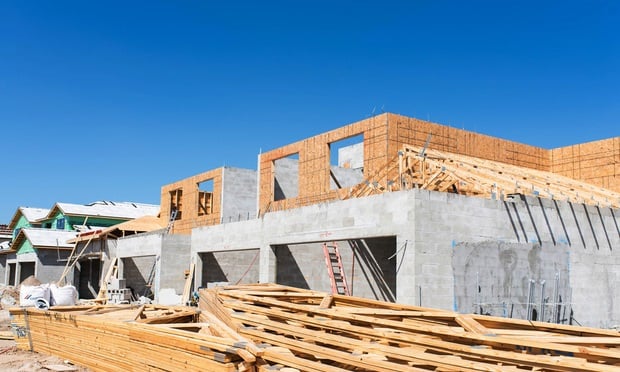NEW YORK CITY—Every point in the economic cycle creates its own set of benefits and challenges. In the current local market, the rise of technology companies and other creative class firms is unofficially setting forth a new mandate on office space while the complex issue of creating and maintaining affordable housing is taking many twists and turns. Those were among the observations of commercial real estate professionals during a panel discussion in Midtown on Thursday.
“There isn't a lot of modern office space in the city so a lot of the growing sectors of the economy are being forced into buildings that weren't meant as commercial office space,” said Seth Pinsky, EVP of RXR and the former president of the city's Economic Development Corp., under Mayor Michael Bloomberg.
“As these industries expand, there's an opportunity to build into their increasing demand, especially outside of Manhattan—like in Brooklyn—where the workforce lives,” he continued. “We've been looking for opportunities to build small scale commercial properties and we'd be willing to do small speculative development.”
Added David Schore, managing director, Mack Real Estate Group, “We're looking at similar types of neighborhoods around the country. In Seattle and San Francisco, we are seeing real serious talk about spec office development for creative industries.”
Several panelists expressed an interest in the hospitality sector.
“We've been an active investor, developing a million square foot development in Miami with a hotel,” said Jonah Sonnenborn, managing director, Access Industries. “We believe leisure and corporate travel has rebounded to pre-crash levels. Group travel hasn't recovered as well but we're starting to see signs of life in that business. Hotels have been priced aggressively but there's still room to run.
RXR—which primarily keeps to New York City and does some investing in the tri-state area—also is looking at hotels, focusing on unconventional areas or properties that could be built with innovative design. “We are looking at opportunities in non traditional neighborhoods of Manhattan and in the outer boroughs—though some areas are approaching saturation—like Long Island City,” said Pinsky. “We're especially interested in properties with more common space and smaller guest rooms.”
All of the speakers were in support of the effort to add or preserve affordable housing but Pinsky, the panel's expert on the topic, expressed concerns on that front.
“Mayor Bill de Blasio is right to focus on it; affordability is a real challenge to the future health of New York,” he asserted. “But the middle class over the last 10 or so years actually has been roughly stable so they're not being priced out of the city. But they are being priced out of neighborhoods that traditionally had been middle-class and are not anymore.
“The most important thing the city has done is improve public safety,” he continued, “allowing the middle-class to move to new areas rather than being priced out of city. But we also need to invest in infrastructure in those areas and look for communities that could be of interest to the middle-class so we can develop them.
“The issue isn't just affordability,” Pinsky noted, “but the ratio of price to income. In addition to trying to control cost of housing we can't build affordable housing that displaces commercial space and cuts down on jobs; we may not get those back; hurting the very people we were trying to help. That's going to be the biggest challenge this administration faces.”
So what point in the cycle has commercial real estate reached? “It depends on the market and sector you're talking about,” said Sonnenborn. “If you look at gateway cities like London, New York and San Francisco, or places with growth like Austin or Seattle, they're very hot. But I can't tell you what inning we're in. Certain markets have staying power but you have to be careful because it is market and sector specific.”
Some investors are preparing for the worst. “We're deploying conservative leveraging as a hedge,” said Schore. “We're looking at markets that will outpace inflation. If we get into a downturn, we'll be in a position to refinance our construction loans, service that debt and ultimately benefit when the market turns around.”
Added Pinsky, “ Employment is increasing and national demographic trends are favoring places like the city but you have to underwrite conservatively to make sure can ride out the downturns. It's easy to spot market where adjustments will take place but it's hard to time them.”
Want to continue reading?
Become a Free ALM Digital Reader.
Once you are an ALM Digital Member, you’ll receive:
- Breaking commercial real estate news and analysis, on-site and via our newsletters and custom alerts
- Educational webcasts, white papers, and ebooks from industry thought leaders
- Critical coverage of the property casualty insurance and financial advisory markets on our other ALM sites, PropertyCasualty360 and ThinkAdvisor
Already have an account? Sign In Now
*May exclude premium content© 2025 ALM Global, LLC, All Rights Reserved. Request academic re-use from www.copyright.com. All other uses, submit a request to [email protected]. For more information visit Asset & Logo Licensing.








